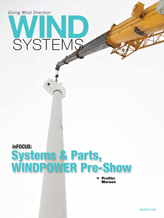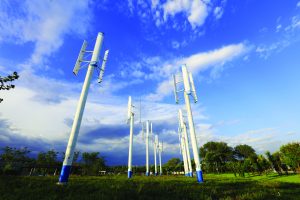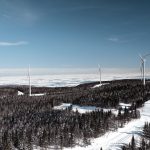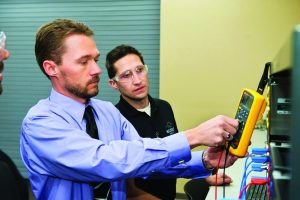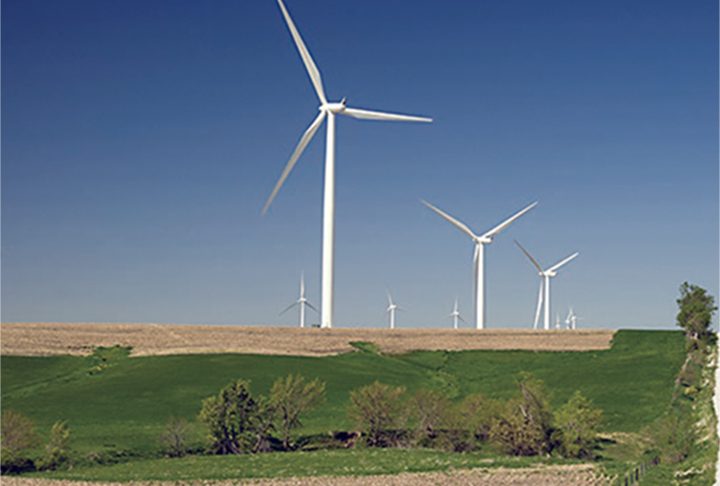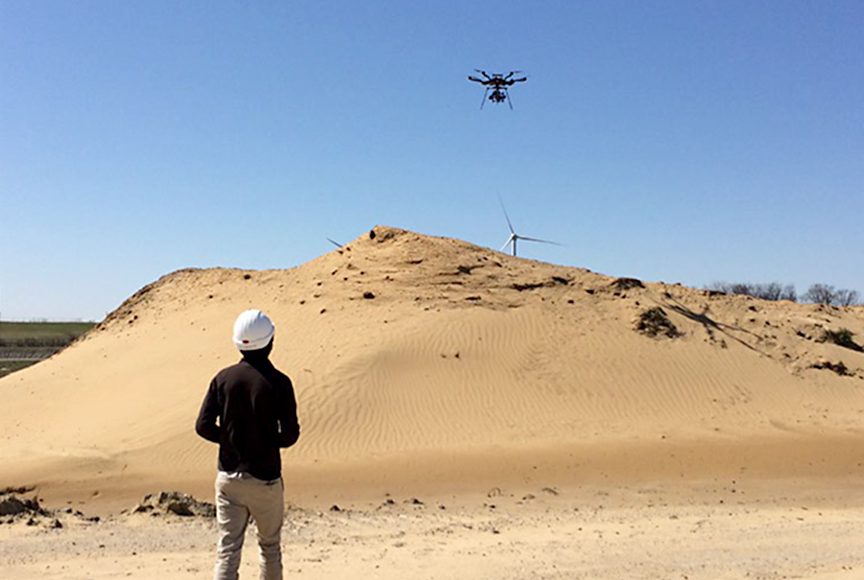Edition 2 of the International Electrotechnical Commissions (IEC) 61400-12-1 standard for power performance measurements was released in early 2017. This new standard codified the use of remote sensing devices (RSD) for primary wind-speed measurement in power-curve evaluations in simple terrain. Use of RSD requires verification of each device against a reference meteorological (met) mast before or during the campaign.
In December 2017, DNV GL and Group NIRE Renewable Energy Solutions (GNIRE) commissioned an RSD verification site at the Reese Technology Center in Lubbock, Texas. This is DNV GL’s second verification site worldwide. The first site is in Janneby, Germany, which was developed in 2013.
The GNIRE site, established in 2010, covers more than 2,000 acres and provides optimal real-world conditions with consistent wind speeds throughout the year. GNIRE has partnered with GE, Gamesa, Hover Energy, and other manufacturers for prototype wind-turbine testing activities. The RSD verification site has a 125-meter meteorological (met) tower instrumented with six levels of high-quality measurements to offer industry leading RSD verification capabilities. Measurement and verification services offered by DNV GL are accredited by the American Association for Laboratory Accreditation (A2LA) to IEC/ISO 17025.
While the primary purpose of the site is for RSD verification, it is also well suited for research and development activities related to new sensor technology, sensor mounting equipment, mounting uncertainty, verification of other wind speed, and more.

Remote Sensing Devices
RSDs have been an important part of the evolution of the wind-measurement industry, and DNV GL has been active in ground-based RSD measurements since 2005. The ability to measure meteorological conditions with technologies such as Lidar and Sodar allow for more economical meteorological assessments and have potential to reduce overall measurement uncertainties depending on the configuration and application at the project measurement site.
The economic savings are rooted in the fact that ground-based RSD can measure conditions across typical wind-turbine rotor heights with only a short met mast for monitoring of the RSD. There are no exposed, rotating components at heights, and this keeps operational and maintenance costs down. There are also no costly aviation permits required, and short-term installations can be completed within a few hours with little more equipment than a pickup truck. The value of RSD has been realized for many years with groups such as the International Energy Agency’s (IEA) Task 32 being actively involved with publishing best practices and removing barriers to apply Lidar technology.

(Courtesy: DNV GL)
In 2017, the IEC published Edition 2 of its standard, 61400-12-1 for power performance measurements. This new release cemented RSD’s position in the future of the wind industry as a leading technology because, for the first time, an IEC-compliant power-performance measurement of a wind turbine can be performed using RSDs. However, there are few publications regarding the actual magnitude of the measurement uncertainty when applying Lidar for power performance measurements. The hope of the industry was that RSD would provide a rapidly deployable method for measuring power performance that would also result in a lower uncertainty due to having measurements across the entire turbine rotor. IEA Task 32 coordinated a comparative, or round robin, exercise to allow the industry to practice applying the new uncertainty guidelines and to also get an estimate of the differences in uncertainty when using Lidar with or in lieu of cup anemometers. While already understood by many in the industry, this study clearly demonstrated that standalone Lidar had a higher relative uncertainty compared to using the traditional cup anemometer primarily due to higher verification and classification uncertainty. To reduce the uncertainty relative to a cup anemometer, improvements are needed in the verification and classification process. A high-quality reference mast such as at the GNIRE site will facilitate those improvements.

In the wind-resource field, the application of RSDs has been growing consistently for many years. RSDs are primarily used in conjunction with cup anemometry to reduce wind-shear extrapolation uncertainties. In simple to moderately complex terrain, the RSDs may be used as a primary measurement to help inform the wind flow across a site when certain minimum validation requirements are met. Therefore, before the RSD adds value to the project, high quality, calibrated cup anemometer data are used in some way as the reference against which remote sensing measurements are evaluated to establish a relative understanding of site-specific accuracy.
Test Site
The GNIRE verification site provides the necessary high-quality reference mast to minimize RSD verification uncertainties for applications in power performance or wind-resource studies. With verification uncertainties reduced, RSD can be a leading measurement technology for multiple applications. While several such sites exist in Europe, this site is the only high-quality tall reference mast in the United States. Further, the site can support a large number of concurrent RSDs for verifications. The site is well positioned to serve RSD owners in the North American market who want to avoid a longer term overseas logistical challenge to verify a device.
The RSD verification site boasts a 125-meter met tower instrumented with first class anemometers, wind-direction sensors, temperature, pressure, and relative humidity sensors. Ultrasonic anemometry is also included to provide measurements of wind-speed deviations from horizontal. Wind speed and direction measurements are available at six heights with redundant first-class anemometers of different types at each level. All cup anemometers include MEASNET calibrations, and overall, the mast exceeds the requirements of the newest edition (2017) of the IEC Standard for power performance measurements. Sensor data are recorded using a robust industry standard data acquisition system, capable of sampling high data rates and exporting multiple time series averaged statistics (e.g., one minute, 10 minutes, etc.).

DNV GL is using the industry standard black box concept for verifying and assessing the measurement accuracy of ground-based RSD. Using the black box concept, the performance of the Lidar system is verified by comparing its outputs (e.g., horizontal wind speed and wind direction) with equivalent reference values. The site can also be used for verification of nacelle Lidar RSD technologies. For this type of service, the nacelle Lidars would be mounted at ground level and tilted upward to use the 35-meter level instrumentation.
It is clear the future is bright for RSD in the wind industry. DNV GL expects the new verification site will help enable growth in the application of RSD for various applications in North America and globally.
















